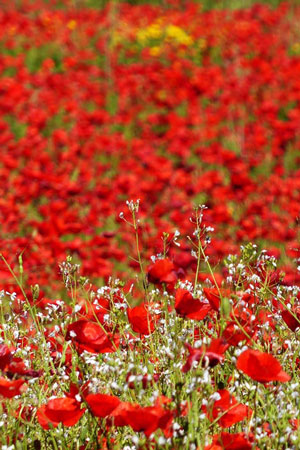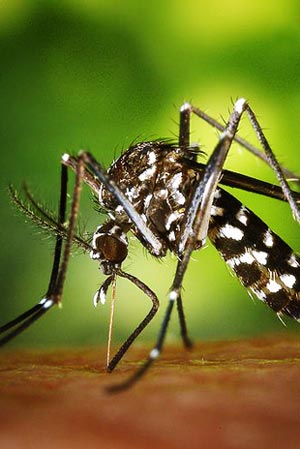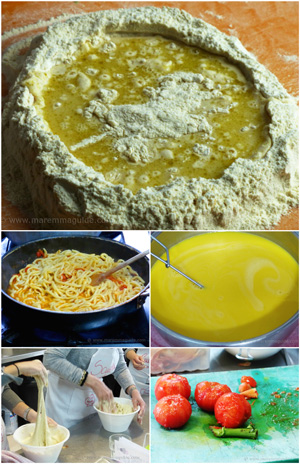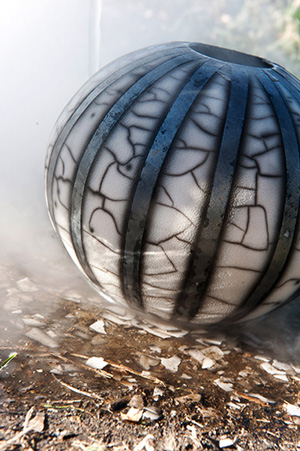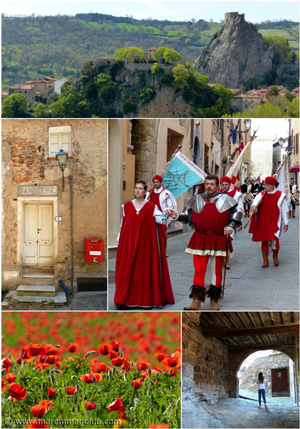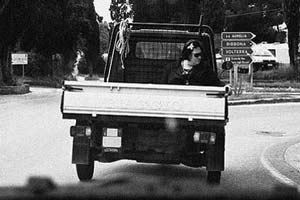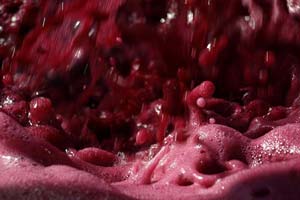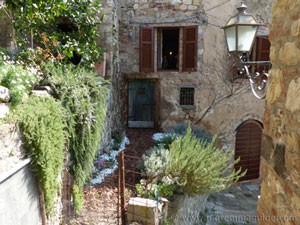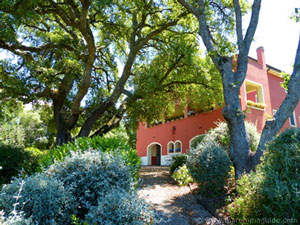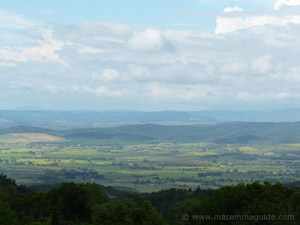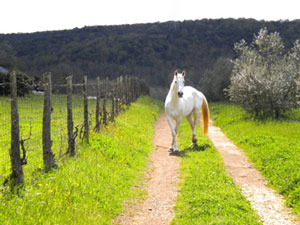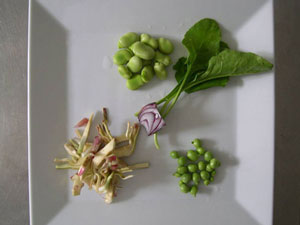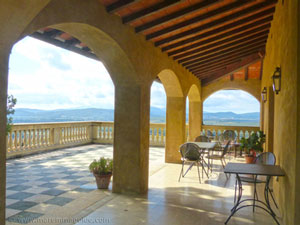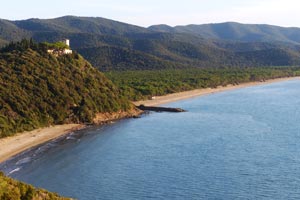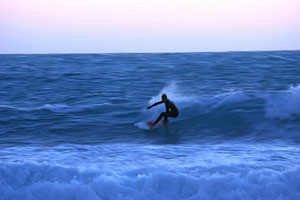Travale
Montieri, Maremma Tuscany

The tiny village of Travale in Maremma Tuscany is one of those places which has you contemplating before you even realise it retiring there for the pure peace and quiet that it offers deep in the wooded hills of la Maremma... and I already live in a quiet Maremman village!
Its not a picture postcard Tuscan hill town that any Tuscany tour will have visited - or probably ever will. It is simply another small hill top village in Maremma, lived in (about eighty people - "travalini"), cared for, and with oodles of history.
Including something quiet "particolare" (particular/special) for those with an interest in the development of the ancient Italian language. And being the home of the most infamous witch in Maremma.
But the attraction for me about this lovely village is its circular medieval castle layout within which much of the village is still contained: you can drive around it, but trust me its not for the feint hearted driver of a hire car! or those with a fear of driving through narrow streets - we passed through its medieval gateway with less than an inch grace on either side! Much better still, park at the entrance to the village (see below) and walk around. You will be rewarded with near vertical alleyways to explore and wonderful views of Maremma's metalliferous hills - the "colline metalliferi".
 |
The medieval 13th century entrance gate - la porta - to Travale: still the main road! |
A visit to Travale also makes for a great reprieve from the summer heat along Maremma's coast. You will be warmly welcomed with smiles by those who live there.
A little bit of a lot of history
The Comunita Montana Colline Metallifere information board in the village tells some of its story.
Il castello della 'guaita'
- The castle of the 'whine'
 |
The village site plan drawn from the ancient Lorenese Land Registry of 1824. The layout of the village reflects the attitude of the medieval castle. |
Ownership and Rule of Travale Castle
Travale castle belonged to the counts of Pannocchieschi, but during the twelfth century the bishop of Volterra also claimed rights to it. In the thirteenth century the castle was controlled by the Pannocchieschi family who, on several occasions, were subjected to the rule of the City of Siena. The family remained the owners of the property and retained the rights over Travale during the fourteenth century, not loosing their title as lords of the domain, even though they were re-subject to the control of Siena until 1329.
Il castello apparteneva ai conti Pannocchieschi, ma nel corso del secolo XII anche il vescovo di Volterra rivendico diritti su di esso. Nel XIII secolo il castello risultava controllato dai Pannocchieschi che, a piu represe, lo sottoposero al comune di Siena; la casata rimase proprietaria di beni e diritti in Travale durante il secolo XIV e non perse il dominio signorile sul centro, sebbene fossero rinovate altre sottomissioni a Siena sino al 1329.
In the mid-sixteenth century ownership of the castle and town passed to the Granducato di Toscana (the Grand Duchy of Tuscany).
The layout of the village
 |
The near verticle Via Scalalunga - "long stairs" |
The historic center of Travale has a circular floor plan configuration, derived directly from the shape of the ancient castle, whose walls are now incorporated into the village houses.
In the south-east of the city opens a door with a round arch in travertine and black stone, flanked to the north by a circular tower.
On top of the hill there are two adjoining church buildings: the later, the Compagnia, was probably built on the site previously occupied by a stately-military structure of which some traces are preserved.
The church dedicated to Saints Michele and Silvestro consists of a rectangular room with an apse cut into the back wall. It has a portal surmounted by a lintel crowned by a two-tone stone arch.
Il centro storico presenta una configurazione planimetrica circolare, derivata direttamente dalla conformazione dell'antico castello, le cui mura sono oggi inglobate nelle abitazioni. Nel tratto sud-orientale della cinta si apre una porta ad arco tondo in travertino e pietra nera, affiancata a nord da una torre a pianta circolare.
Sulla sommita del rilievo si trovano due edifici ecclesiali comunicanti: il piu tardo, della Compagnia, probabilmente e sorto nel sito in precedenza occupato da una struttura militare-signorile di cui si conservano alcune tracce. La chiesa intitolata ai SS. Michele e Silvestro e costituita da un'aula rettangolare con abside ricavata nello spessore del muro di fondo e presenta un portale sovrastato da uno spesso architrave, coronato da un arco bicromo in pietra.
La 'Guaita di Travale' - The 'Whine of Travale'

Travale castle owes its fame to an ancient document in the vernacular, which has interested scholars of the origins of the Italian language.
The text written in the twelfth century records evidence relating to a dispute over possession of the castle: amongst the texts, a certain Pietro, nicknamed Pochino, refers to the person Manfredo of Casamagi who was reluctantly compelled to perform the services of a guard (guaita) on the walls of the castle of Travale and who, therefore, expressed the following faithfully reported by the writer of the text: "Guaita Guaita bad, I did not eat but half bread", perhaps alluding to the lack compensation given for the hard service provided.
Thus we have been handed down in this way a vivid and colourful 'spoken' expression of the vernacular of the time.
Il castello deve la sua notorieta ad un antico documento in volgare, che ha interessato gli studiosi delle origini della lingua italiana. Si tratta di un testo redatto ne secolo XII che raccoglie le testimonianze relative ad una controversia per il possesso del castello di Travale: tra i testi, un certo Pietro, soprannominato Pochino, riferi che tale Manfredo da Casamagi era costretto a compiere contro voglia servizi di guardia (guaita) sulle mura del castello e che percio si sarebbe espresso nei termini seguenti, riportati fedelmente dall'estensore dell'atto: "guaita, guaita male, non mangiai ma' mezo pane", alludendo forse alla mancanza do ogni contropartita per il duro servizio prestato: abbiamo in tal modo tramandato un brano di 'parlato' colorito da vivide espressioni del volgare degli umili.
Le Miniere - The Mine
Near Travale during the course of the middle ages mines were opened for the extraction of silver. Already documented from 1248, in 1301 they became part of the possessions of the town of Massa Marittima. For the sixteenth century written sources attest, in addition, to an extraction activity of blue vitriol in the district of the castle where there were some lagoons.
Presso Travale furono aperte ne corso del Medioevo alcune miniere per l'estrazione dell'argento, gia note nel 1248 e che nel 1301 entrarono a far parte del possedimenti del comune di Massa Marittima. Per il secolo XVI le fonti scritte attestano, inoltre, una attivita estrattiva di vetriolo azzurro nel distretto del castello, dove si trovavano alcuni lagoni.
The Medieval Witch Elena di Travale
During the witch trials in the 1400's in Italy, a young unmarried woman called Elena who lived in Travale was accused of witchcraft and taken to the City of Volterra under whose rule Travale was at the time.
 |
Photo by Brumo |
There, under the threat of being burnt at the stake, she was "examined" and put on trial by the Bishops and clergy of Volterra.
Despite in all probability her only "sins" being that of being an umarried woman past a certain age and her use of herbs, she "spontaneously" confessed to all of the many charges against her, for which she received a guilty verdict.
Her sentance was fifty public lashings in the central square of Volterra, a fine of fifty gold florins, and permanent exile.
Elena's story is set in the context of a long period poor harvests and famine, and an environment of dark Maremma woodlands that emitted then as they still do today, hot volcanic sulphurous vapours... Read more: Elena di Travale a medieval witch in Maremma.
Tempora Artis Magicae
During the first weekend of August each year there is a re-enactment in the village of the imprisonment of Elena, including a display of reproductions of instruments medieval torture (not sure this is one of Maremma's festivals that I want to visit!), with an artisan market, aperitivi in the wine cellars, a medieval dinner, magic show and more.
Parking and the Children's Playground

There is plenty of (free) parking in the village, but your best option by far is to park at the entrance to the vilage in the shady car park under the trees. From here, if your little ones happen to be hankering after a little play time when you return from exploring, you can access Travale's playground (with a tarmaced 5-a-side soccer pitch - in use when I last visited as a roller skate circuit) up the steps that take you up the bank on the opposite side of the road.
Refreshments
I did say that it was a small village didn't I?! There aren't any shops or bars to browse, so best take your own supplies! The nearest bar and restaurant is on the main Strada Provinciale delle Galleraie road at the junction when you turn off to Travale.
The nearest supermarkets at which the locals shop are in Poggibonsi or the COOP in Massa Marittima. I have it on good authority though, that if you happen to run out of bread the bar/restaurant can sometimes help out!
Panoramic Views
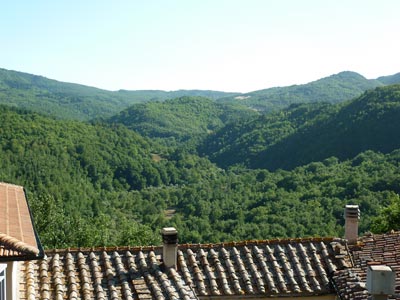
Situated deep in Maremma's metalliferous hills, the village has wide sweeping views from the south-east to the west of the Mount Cornate, and the Valley of Cecina. The mountain of Mountmurlo (835 m) where silver was once mined and which once belonged to Travale lies to the south-east. To the south is Poggio di Montieri (1051 m), and below the important medieval mining town of Montieri (704 m).
On the road south-west to Massa Marittima lies the town of Gerfalco with the greatest altitude at 774 metres of all of Maremma's Colline metallifere towns and villages.
To the west is the stony summit of the Cornate (1060 m), part of the Riserva Naturale di Cornate e Fosini, and the "monti delle Carline" (hills of Carline), rich in water supplies, woodlands and wildlife and home to abandoned farms. The Carline hills extend to Poggio Ritrovoli (1014 m) on the border with the Province of Siena.
To the north-east lies the woodlands of the Riserva Naturale di Palazzo.
A perfect place for walking, trekking, mountain-biking and lovers of nature. But not for those of you seeking a great night-life, unless listening to wild boar rooting in the woods counts!
The Video
Getting There and The Map
Take the road north of Massa Marittima (and Ghirlanda) for about 4km to the roundabout in front of an Osteria. Take the left-hand road No.439 direction Niccioleta and Firenze for 6km at which point take the right-hand exit for Fontalcinaldo, Gerfalco and Montieri. At the junction for Gerfalco (on your left), continue towards Montieri along the Strada Provinciale del Pavone.
At Montieri continue towards Firenze along the along the Strada Provinciale delle Galleraie until you reach the tiny hamlet of La Fabbrica, at which point take the left-hand turn to Travale. Unless you plan in taking your four wheel drive into the woods, the road is a dead-end and so you'll be returning the way you came.
View in a larger map
Places to stay
One of the very best Tuscany farmhouses in Maremma happens to be just down the road: Lucia's agriturismo I Monti with exceptionally good rates and spectacular views.
Explore some more...
